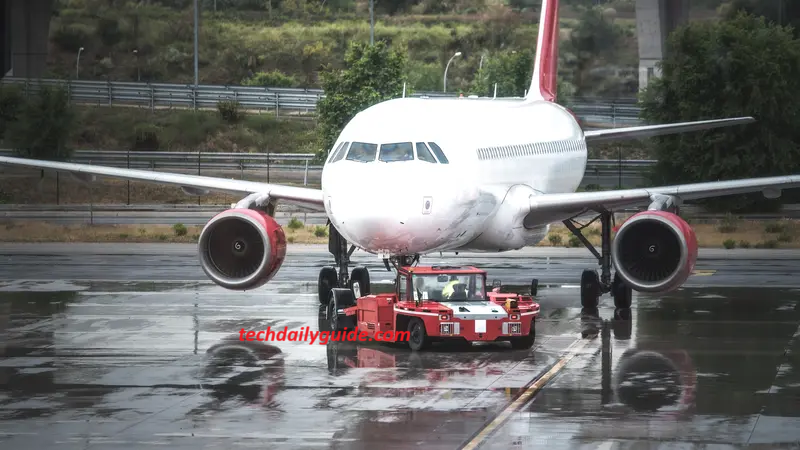📑 Table of Contents
-
Summary (120 words)
United Airlines Flight UA770 experienced an unexpected emergency diversion in 2025. What began as a routine international flight quickly became a textbook case of aviation safety, technology, and protocol at work. The incident highlighted the importance of real-time communication systems, highly trained crew members, and global coordination. This in-depth article explores the cause, timeline, and response to the incident. It explains how predictive maintenance, AI, and emergency protocols protected passengers and crew. Passengers onboard remained calm thanks to a professional crew response and prompt rebooking assistance. The safe landing at Heathrow Airport turned a potential crisis into a story of resilience and preparedness. The event offers valuable lessons in aviation safety, passenger communication, and how airlines handle emergencies today.
United Airlines Flight UA770 Emergency Diversion
Introduction
When a routine flight is suddenly diverted, headlines follow. In 2025, United Airlines Flight UA770 went from ordinary to urgent, prompting questions and curiosity. What happened, and how did the systems in place prevent disaster? Let’s explore the full story behind UA770’s emergency diversion.
Timeline of Events
- May 27, 2025 – 10:05 AM: UA770 departs from Barcelona en route to Chicago.
- 11:45 AM: The aircraft reaches cruising altitude at 37,000 feet.
- 12:10 PM: Pilots report technical issues to air traffic control.
- 12:15 PM: Squawk 7700 is activated to signal a general emergency.
- 12:20 PM: Diversion to London Heathrow begins.
- 1:00 PM: The aircraft lands safely.
- 1:15 PM: Passengers are deplaned; aircraft is inspected.
- 5:00 PM: United Airlines issues a public statement.
What Triggered the Diversion?
Though official investigations are ongoing, early indicators pointed to cabin pressure fluctuations. The aircraft’s automated systems detected irregularities. The pilots acted quickly, notifying controllers and opting for a precautionary diversion. In aviation, early action saves lives.
Aircraft Overview: Boeing 787-9 Dreamliner
Flight UA770 operated on a Boeing 787-9 Dreamliner. Known for its long-haul capabilities and safety features, the aircraft includes:
- Real-time health monitoring systems
- Triple-redundant flight computers
- Advanced cabin pressurization controls
- Fly-by-wire system for more precise maneuvers
These systems contributed to a safe landing.
Emergency Protocols in Action
Upon detecting issues, pilots followed SOPs (Standard Operating Procedures), which include:
- Squawking emergency code 7700
- Coordinating with airline ops and ATC
- Stabilizing aircraft descent
- Preparing cabin crew for safety procedures
Passengers were updated with calm instructions, keeping panic at bay.
Passenger Experience
Onboard, oxygen masks deployed as a precaution. Cabin crew moved swiftly, ensuring everyone understood procedures. Though the situation was tense, passengers stayed composed. Many later praised the crew’s professionalism. Once on the ground, they received:
- Meal vouchers
- Rebooking support
- Hotel accommodations (for missed connections)
How Technology Played a Role
Advanced tech was the invisible hero:
- ACARS: Transmitted real-time updates to United’s operations center.
- ADS-B: Shared flight data with ATC and public platforms like FlightRadar24.
- SATCOM: Ensured seamless communication between the cockpit and ground staff.
- AI diagnostics: Flagged the pressurization anomaly and predicted system behavior.
Heathrow Airport’s Preparedness
Heathrow’s emergency systems activated automatically:
- ARFF units (Aircraft Rescue and Firefighting) met the plane on arrival
- Ground systems assigned gates and guided the aircraft
- Passenger info systems prepared for quick updates
Role of EUROCONTROL and ATC
EUROCONTROL coordinated airspace transfer from Spain to UK airspace. ATC ensured:
- Rapid response routing
- Deconfliction from other aircraft
- Coordination with medical and security teams
Public & Media Attention
Platforms like FlightRadar24 tracked UA770 in real time. Thousands followed the flight path as the emergency unfolded. Social media buzzed, but United’s official updates remained factual, avoiding speculation.
Aviation Safety: Lessons from UA770
- Emergencies don’t equal disaster
- Crew training and response matter most
- Redundant systems add safety layers
- Technology enhances pilot decision-making
- Communication ensures passenger trust
2025 Aviation Standards & Improvements
Since the pandemic, aviation has invested heavily in safety:
- Predictive maintenance now prevents over 80% of in-flight failures
- AI-based airspace management improves diversion response time by 40%
- Passenger communication tools help reduce inflight panic
- FAA and EASA collaborate on real-time data regulations
Psychological Impact on Travelers
For some passengers, the experience was anxiety-inducing. Airlines offer post-incident counseling support, and many use aviation data transparency to rebuild trust.
What To Do During a Diversion
- Stay calm and listen to crew
- Use oxygen masks correctly
- Avoid social media panic
- Ask for medical or emotional help
- Keep boarding passes and receipts for claims
Airline Response & Customer Service
United Airlines received positive reviews post-event due to:
- Transparent updates
- Proactive rebooking
- Refund and compensation policies
- 24/7 support availability
Industry Impact
UA770 is now cited as a case study:
- In FAA and ICAO training modules
- In airline CRM (Crew Resource Management) refreshers
- In aviation university simulations
Looking Ahead: Smarter, Safer Flights
The aviation world is turning to:
- Blockchain for aircraft maintenance logs
- AI copilots for non-critical decision support
- Enhanced ATC automation with voice recognition
- Passenger apps with real-time aircraft health updates
Conclusion
United Airlines Flight UA770’s emergency diversion wasn’t a failure—it was a successful display of everything right in aviation. From pilot training and passenger communication to technology and international coordination, it shows how modern aviation prioritizes life above all. As we fly into the future, Flight UA770 will be remembered not for what went wrong, but for everything that went right.
FAQs
1. What caused the United Airlines Flight UA770 diversion?
Early reports indicate cabin pressurization issues prompted a precautionary diversion to Heathrow.2. Was anyone injured during the UA770 emergency landing?
No injuries were reported. All passengers deplaned safely.3. What aircraft model was used on UA770?
A Boeing 787-9 Dreamliner, known for advanced safety systems.4. What is Squawk 7700?
It’s a transponder code that signals a general emergency to air traffic control.5. Can passengers claim compensation after a diversion?
Yes, depending on delay duration and airline policy. United provided assistance.6. How can I prepare for emergencies while flying?
Follow safety briefings, keep seatbelts fastened, and remain calm in unexpected situations.Disclaimer: This article is based on available 2025 data, industry updates, and public records. For official information, refer to United Airlines or the FAA.Read also:https://techdailyguide.com/gimkit/


